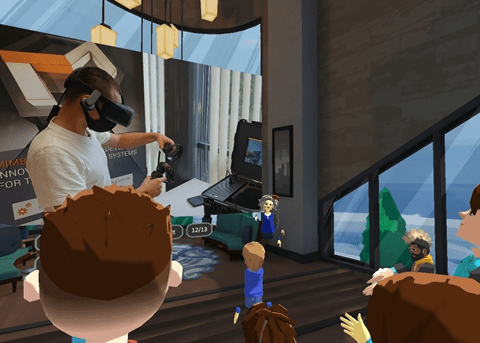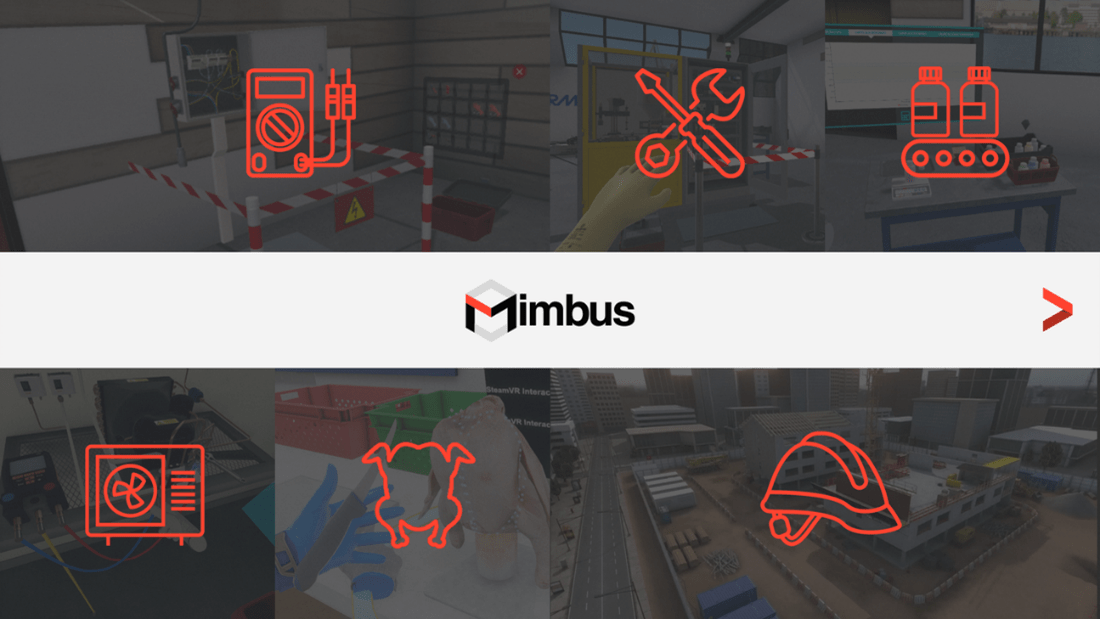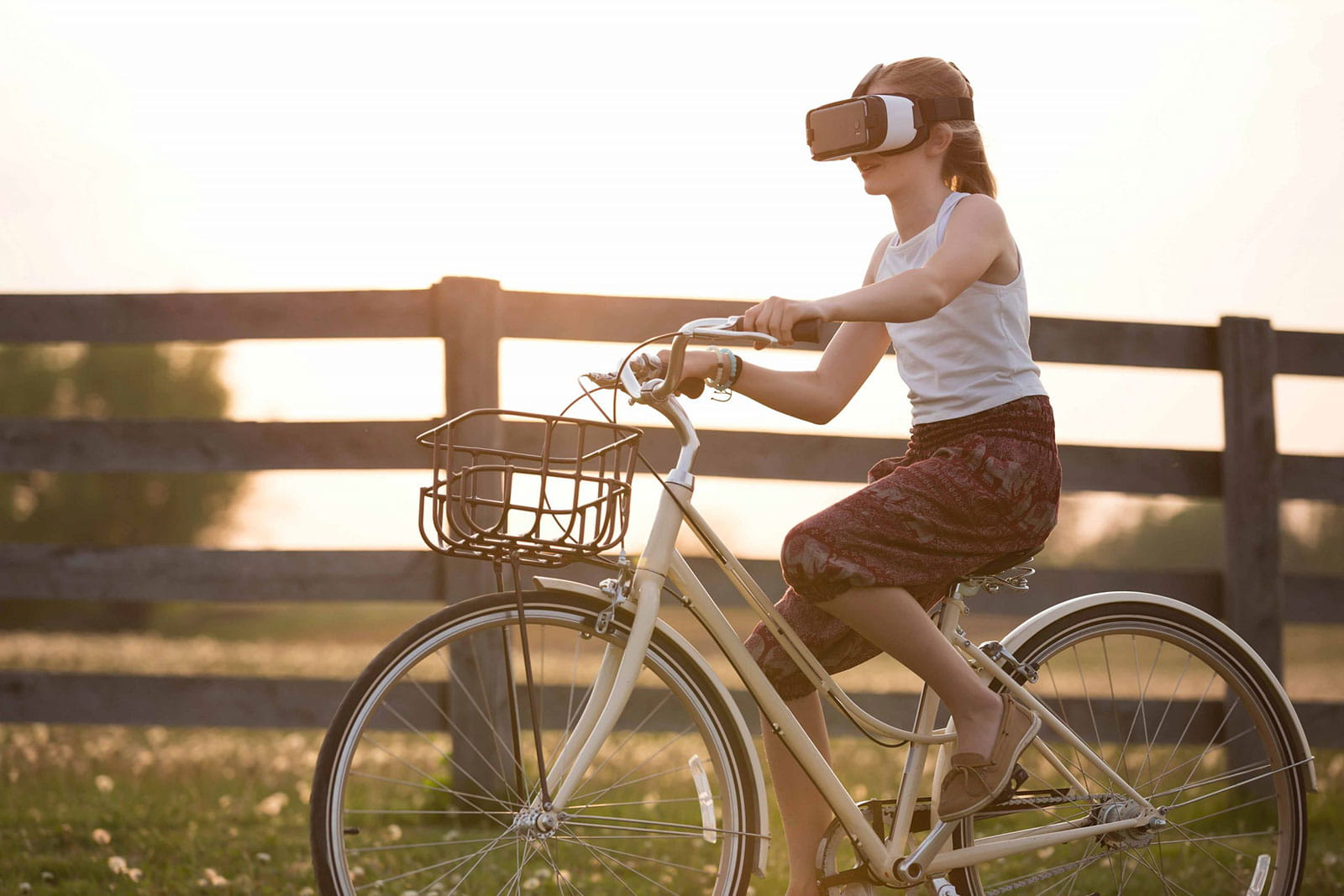Training is about to make a 360-degree turn: the phenomenon is not recent but is driven by the health crisis we all know. New methods and techniques are emerging to position the trainer as a guide to knowledge.
At the same time, virtual reality as a pedagogical tool transforms active pedagogy through metaverses. Discover in this article how these new techniques, supported by immersive technologies, can help you move from passive to active mode for a more engaged teaching.

Definition of active pedagogy
“The normal way of acquiring knowledge is by no means observation, explanation and demonstration, the essential process of school, but experimental trial and error, a natural and universal approach”. Célestin Freinet
Active pedagogy can be explained in simple words. It consists in making the student active in class, which means making him/her an actor in the teaching process. The teacher’s mission is to create a framework in which the learners will produce their own knowledge. In this sense, immersive solutions are designed especially for teachers. They allow you to perfect your teaching practices. You will be able to establish a friendly communication with the students, to stimulate them and to accompany them in the framework of intellectual and physical exercises.
In order to understand how to implement a good methodology of active pedagogy, you must first know the basics. Let’s take a look at this…
The Attention
The challenge for the “knowledge broker” is to attract attention and to channel it.
This implies avoiding dispersion and requires devoting oneself to a single task. In this sense, the cognitive sciences raise the question of discipline and inequalities between social backgrounds in terms of the acquisition of behaviours that facilitate learning.
Active engagement
A passive organism does not learn; there must be mobilization for learning to occur. This also implies testing the reliability of knowledge. And making the conditions for learning more difficult will paradoxically lead to an increase in commitment and cognitive effort, synonymous with better attention.
Feedback
Learn from mistakes to move forward. The brain works by iterations: prediction, feedback, correction, new prediction. This means that mistakes are normal, unavoidable, and fertile. This implies that it should not be overly sanctioned, since stress is an inhibitor of learning, and the feeling of powerlessness can even annihilate any further effort. On the contrary, motivation is born from encouragement and appreciation.
Consolidation of learning
The phenomenon of automation is crucial. It is the one that allows to pass from the explicit to the implicit. In other words, if we take the example of a child learning to read, the beginnings are difficult, given the quantity of elements to be retained. But the phenomenon of automation makes it possible to go beyond decoding, and to concentrate on the meaning of the text.

Integrating virtual reality as a tool at the service of pedagogy
Today we need more empathy, more thought-provoking emotional experiences and more meaningful learning contexts.
This is exactly where virtual reality comes in, in a more humanistic perspective than one might think!
The use of virtual reality in education to train professional skills is a reality. Immersed in a virtual world, participants can learn and train through job simulations, in safety. Discover in our articles the experience and educational added value told by a teacher 2.0 here.
The use of VR and a fully digital environment called “Metaverse” allows to repeat a task endlessly. This greatly favours the active pedagogy method to engage apprentices even more and make them actors of their training. The industry sector is among the first to have valued the relevance of immersive tools for learning the right trade gesture. Welding, industrial painting and woodworking are all jobs that are in short supply due to the lack of attractiveness of these jobs and the difficulty of correctly transmitting knowledge. We give you here some examples of pedagogical tools that could be very useful!
The right to make mistakes is important because you can repeat a task until you memorize it. Virtual reality allows learning by doing. With this method, users reach a memorization rate of 75 to 90%, compared to 20% for a traditional training!

Put technology at the service of education, and not the other way around
Faced with the growing demand from companies, public services, training organizations and even the general public for modern and hyper-interactive offers, the new method proposes solutions with a very broad spectrum, ranging from face-to-face training to tools and quality “self-training” programs. This is combined with Artificial Intelligence, personalized training paths, etc.
To achieve this integration, the immersive training tool must be combined with a data collection platform so that it can be analysed by the trainer. This is undoubtedly THE new skill to develop among teachers. This will inevitably involve training trainers and accompanying them towards success in their new mission.
No need to become an engineer or computer developer. The simplification of metrics is required for a democratization of educational platforms coupled with virtual reality. This is to optimize learning paths or skills development and to enable excellent teaching efficiency.

Just one piece of advice to give you: switch from passive to active pedagogy!
Most of the training courses, whether face-to-face or distance learning, and especially for manual jobs, do not include enough practice. The reasons are simple. It is either the lack of innovative teaching aids, or the cost of consumables is too high, or the level of security to be guaranteed to the students.
The digital mode of teaching (called “asynchronous”) is clearly in vogue, with a real movement of the new generations who wish to move towards “active” self-training (short, interactive and self-service).
After reading, do you think that in the next few years virtual reality could become an essential pedagogical tool? How would you integrate these tools into your educational programs? We would be delighted to enrich our knowledge with yours.

